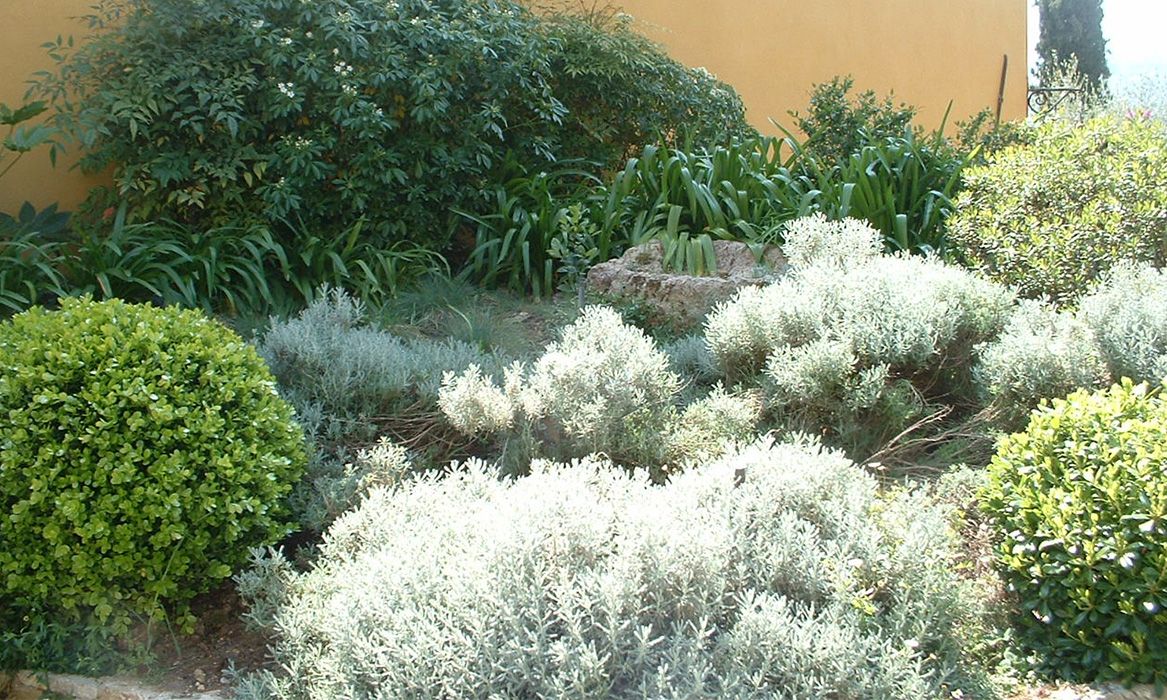Mediterranean gardens
Our approach
Planting
We plant suitable ground-covering plants for small areas that receive mild trampling. For larger areas we use minerals such as gravel, pebbles, and flagstone punctuated by perennials and small shrubs.
We start by breaking up the undersoil and the roots that hold it together. We then add soil and/or supplement the existing soil with nutrients.
Before adding new plants, we dig holes three times the size of the root ball.
The bottom of the planting hole is drained to allow the roots to push down into the ground.
We prefer to plant in the autumn to make the most of the rainy season and allow the plant to establish itself before the summer.
We add natural phosphorus in the planting hole to help the roots take hold.

Saving water
We aim to create a rather dense layer of vegetation, adding large trees and bushes to create shade.
We plant hedges to enclose the area and provide shelter from the wind.
Plants are grouped based on their water and sun requirements.
We recommend mulching or covering the ground beneath the plants.
Advantages:
Keeps beds cool, restricts evapotranspiration from the soil, prevents weeds without using chemicals.

Different types of mulch / coverings
- Cereal mulch (provides soil nutrients as it breaks down)
- Flax straw mulch (7-8 cm thick),
- Poplar mulch (6 cm thick),
- Grass cuttings,
- Mineral layers (differing grain size, 10-12 cm thick)
- Cocoa pods (5 cm thick),
- Black plastic membrane (temporary),
- Wood chip mulch (20 cm thick),
- Planting of vegetation layers (to limit weeding) and evergreen shrubs,
- For difficult grasses (couch-grass): Plastic membrane and wood chip mulch.
Mulch/cover should be installed before the winter or summer periods.
To summarise: Use organic mulch for fast-growing plants, and mineral mulch for small or covering plants.





